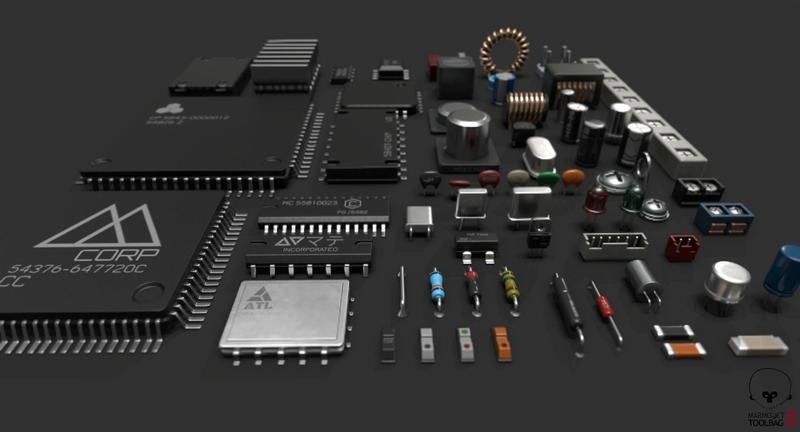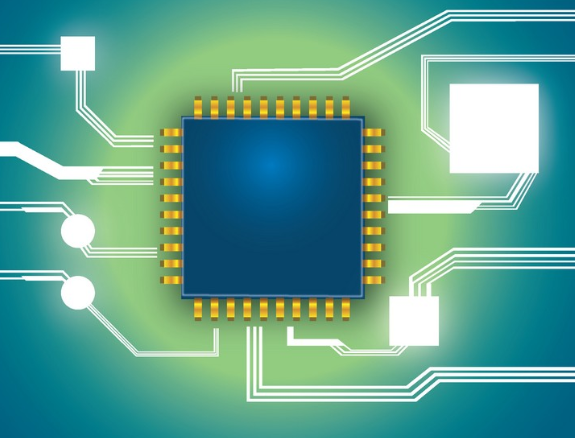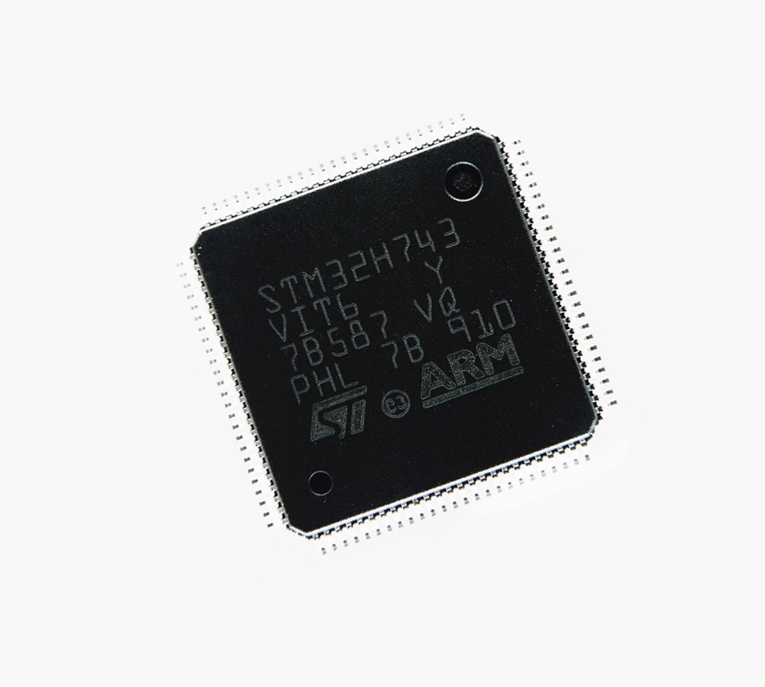1. Core Challenges and Original Factory Restrictions in Procurement of Military Electronic Components
The procurement process of military electronic components faces multiple complex challenges, and its core difficulties are mainly reflected in the following aspects:
Strict technical standards and reliability requirements
Military electronic components must meet high reliability, long life and anti-interference capabilities in extreme environments. For example, chips need to be “radiation-hardened” to cope with space or nuclear environments, and capacitors must comply with screening standards such as GJB7243-2011, covering mechanical properties, environmental adaptability and electrical characteristics testing. Such standards require components to operate stably under conditions such as -55℃ to +125℃ temperature range, vibration, shock, etc., and must pass strict secondary screening (such as PIND particle collision detection and aging test). If the technical parameters are not up to standard, it may cause the equipment to fail in actual combat, so the purchaser needs to clearly provide detailed technical indicators when inquiring.
Supply chain security and export control barriers
International political factors have led to limited supply of key components. For example, the U.S. Export Administration Regulations (EAR) and the International Traffic in Arms Regulations (ITAR) impose strict export controls on high-end chips, radio frequency devices, etc. The original manufacturer needs to obtain approval from multiple governments to obtain export licenses, and the process takes 6-12 months. In 2024, the United States further adjusted the definition of military end users, included national police, intelligence organizations, etc. in the scope of control, and required the purchaser to provide more detailed end-use descriptions, further increasing the complexity of procurement.
High threshold and resource tilt of original manufacturer orders
The original manufacturer gives priority to the military and long-term cooperative customers, resulting in the following restrictions for civilian purchasers:
High minimum order quantity (MOQ): For example, the MOQ of a certain type of high-reliability MLCC is 100,000, which is much higher than the civilian market.
Long delivery cycle: The production cycle of special process devices (such as gallium nitride power modules) can reach 18-24 months.
Strict qualification review: The original manufacturer requires the purchaser to have confidentiality qualifications of weapons and equipment scientific research and production units, equipment contracting units, etc., and a confidentiality agreement must be signed.
Price opacity: Military-grade devices are usually 5-10 times more expensive than civilian products, and the original manufacturer keeps the price confidential, making it difficult for the purchaser to compare prices.
Information asymmetry and the risk of domestic substitution
Although the domestic production rate of domestic military electronic components is about 70%, high-end chips (such as FPGAs and AD/DA converters) still rely on imports. During the procurement process, the problem of information asymmetry between suppliers and purchasers is prominent. For example, the original manufacturer may conceal the product’s technical parameters or production capacity, making it difficult for the purchaser to accurately evaluate alternatives. In addition, domestic substitution requires re-verification of technical compatibility, which may extend the project cycle.
2. Core strategy to break through procurement bottleneck through HK EQGOO LIMITED
As an international supplier focusing on military electronic components, HK EQGOO LIMITED provides customers with the following solutions with the geographical advantages of its Hong Kong base and global supply chain network:
Qualification guarantee and compliance management
The company holds GJB9001C weapons and equipment quality management system certification and has passed ISO 9001, AS9100D and other international certifications to ensure that products meet military standards. Its Hong Kong base has bonded warehousing qualifications, which can quickly handle cross-border procurement and logistics to avoid export control risks. At the same time, the company strictly follows US EAR, ITAR and other regulations to provide customers with compliant procurement paths.
Diversified supply chain network and spot advantages
Original factory cooperation: Establish long-term cooperation with original factories such as TI, ADI, Xilinx, etc., and give priority to obtaining scarce production capacity. For example, through cooperation with Rochester Electronics, more than 20,000 types of semiconductor components that have been discontinued by the original factory can be provided to meet the maintenance needs of military equipment.
Spot inventory: More than 16,000 military components are always available, including MLCC, connectors, RF modules, etc., with a spot rate of more than 80%. Customers can check the inventory status in real time through the independent station to shorten the delivery cycle.
Special channels: Procurement of sensitive devices is handled through branches in Hong Kong and Taiwan, and the policy advantages of Hong Kong Free Trade Port are utilized to achieve rapid customs clearance and duty-free storage.
Technical support and quality control
Secondary screening service: Equipped with a laboratory that meets the GJB7243 standard, it provides services such as aging, temperature cycling, and PIND testing to ensure device reliability. For example, when customizing a vibration-resistant power module for a drone project, potential defects can be eliminated through X-ray testing and functional testing.
Failure analysis: Cooperate with international authoritative testing agencies to analyze the failure mechanism of non-conforming products and optimize procurement strategies. For example, a satellite project caused signal interruption due to capacitor failure. Through failure analysis, the supplier was locked and an alternative was replaced to avoid subsequent risks.
Customized solutions: Provide technical support such as device selection and derating design according to customer needs, such as recommending FPGAs with higher radiation resistance for avionics systems, and assist in completing domestic substitution verification.
Logistics optimization and cost control
Dual logistics channels: Key components are shipped by air through DHL, and conventional materials are shipped by sea to reduce costs. Using the “storage first and customs clearance later” mode of the Hong Kong bonded warehouse, delivery plans can be flexibly adjusted to meet urgent needs.
Customs clearance support: A professional team handles cross-border customs clearance procedures, simplifies the process, and shortens the average delivery cycle by 30% compared to direct purchase from the original factory. For example, a customer urgently needs a batch of RF modules, which can be cleared and delivered within 48 hours through the Hong Kong bonded warehouse.
3. HK EQGOO LIMITED Inquiry Full Process Guidance
Step 1: Clarify technical requirements and qualification preparation
Technical parameter list: Detailed technical indicators need to be provided, including operating temperature range, radiation resistance level, life requirements, packaging form, etc. For example, a radar project needs to purchase MLCC with a temperature range of -55℃ to +125℃, and the specific capacitance value, tolerance and ESR requirements need to be indicated.
Qualification documents: Submit the company’s business license, confidentiality agreement, equipment manufacturing unit qualification certificate (if any), etc., in order to pass the original factory qualification review. If export control is involved, an end-user statement (End-User Statement) and an end-use statement (End-Use Statement) are required.
Step 2: Visit the independent site to submit an inquiry
Online submission: Log in to the official website of HK EQGOO LIMITED, enter the “Military Electronic Component Inquiry” page, and fill in the following information:
Product model (such as TI’s TMS320C6678) or technical parameter description
Quantity requirements (indicate whether batch delivery is accepted)
Delivery time (it is recommended to reserve a 10-15 day buffer period)
Application scenarios (such as avionics, satellite communications)
Additional files: Upload drawings, specifications or technical agreements to help engineers quickly match resources. For example, a customer uploads a 3D drawing of a certain type of connector, and the engineer provides an alternative solution and quotation within 4 hours.
Step 3: Quotation evaluation and contract signing
Multi-solution comparison: HK EQGOO LIMITED will provide quotations from multiple channels such as original factory direct purchase, authorized distributors, and independent distributors, indicating the delivery cycle, price range and quality assurance measures. For example, the original factory quotation delivery cycle of a certain type of FPGA is 24 months, which can be shortened to 12 months through authorized distributors, but the price is 15% higher.

Contract terms: clearly define the delivery date, quality standards, liability for breach of contract and the mechanism for handling force majeure. For example, if the delivery is delayed due to export control, the supplier shall bear a 5% penalty and provide an alternative plan.
Step 4: Order execution and logistics tracking
Production progress monitoring: obtain order status through a dedicated account manager, such as node information such as materials ordered, produced, and shipped. For example, a radiation-resistant chip ordered by a customer was found to have a yield problem during the production stage, and the supplier notified 30 days in advance and initiated an alternative plan.
Logistics tracking: provide international logistics order numbers such as DHL and FedEx to query the location of the goods in real time. For orders shipped from Hong Kong bonded warehouses, the customs clearance progress can be checked through the customs system, and it is expected to be completed in 2-3 working days.
Step 5: Quality acceptance and after-sales service
Arrival inspection: After receiving the goods, it is recommended to entrust a third-party testing agency (such as SGS) to conduct a full inspection, focusing on verifying the appearance, electrical performance and reliability parameters. For example, a batch of resistors was found to have a resistance deviation that exceeded the specification after testing, and the supplier refunded the full amount and restocked for free.
Technical support: Provide 24/7 technical consultation to help solve application problems. For example, a customer encountered signal interference during debugging, and the engineer remotely guided the optimization of circuit design to ensure that the project was delivered on time.
Conclusion
Military electronic component procurement is a complex project involving technology, supply chain and regulations. HK EQGOO LIMITED provides customers with efficient and reliable solutions with its qualification advantages, diversified supply chain network and professional technical support. Purchasers should formulate flexible procurement strategies based on their own needs and pay attention to international policy trends to cope with increasingly severe supply chain challenges. Visit HK EQGOO LIMITED now to submit an inquiry and start a worry-free procurement journey.



